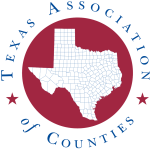County Magazine | February 13, 2023
Data & Analysis
TAC’s Texas County Profiles is a rich repository of county data, such as demographic, geographic, finances and taxes.
For population data, one can find more than the most recent census data and annual estimates. By clicking the History link found near the top of each County Profile, a page showing the history of that county’s population will appear, including the total population data from every census from 1850 to the present. Not only does the page include the numerical data, but also includes tables showing the changes graphically as well as percentage changes from one census to the next.
Archer County’s History page is a good example. According to the Handbook of Texas from the Texas State Historical Association, the Legislature created Archer County on Jan. 22, 1858. However, according to censuses in 1850, 1860 and 1870, the county had no population – it wasn’t until the 1880 census that the agency found 596 individuals in Archer. The county grew, sometimes rapidly, before peaking in 1930, when the population began to fall. It reached a low point of 5,759 in 1970, peaked again at 9,054 in 2010, then dropped to 8,560 in 2020.
Loving County, Texas’ least populous county, peaked in 1940 with 285 people before decreasing to 64 in 2020. Loving is a good example because it shows a decline in population from 249 in 1910 to 82 in 1920 – a decline many other counties reflect during this decade – perhaps because of World War I. Other counties, though not all, show a decline during the 1860s because of the Civil War.
For example, the state organized Clay County in 1861, but the Handbook of Texas says people largely abandoned the county the following year due to the removal of federal troops during the Civil War. As a result, the 1870 census gave no population for the county.

Conversely, Fort Bend County shows a good example of recent growth. The 1970 census found 52,314 people in the county. But by 2020 the number grew to 822,779.
In addition to total population data, County Profiles includes demographics by ethnicity and race (as defined by the federal government), population density, age group quarters and percentages of the population living in rural and urban areas. Each profile also includes a link to redistricting
data from the 2020 census for that county.
The Age Groups link on each county profile provides fascinating information with a population pyramid that breaks down the county by gender, age group and ethnicity. Use the dropdown
boxes at the top of the page to change counties or to change the ethnic group shown (Any, Hispanic and Nonhispanic).
The population pyramid can be a real eye-opener. Be sure to look at those for some of our rural areas such as Lamb County, which has more men in the 60-64 age group than in any other age group. For women, the largest group is in the 65-69 age range.
The population pyramid for Knox County is in Figure 1. Like in many other Texas counties, this pyramid narrows in the middle since many residents are in either the younger or older age brackets. Note also that the number of those younger than 5 years old is relatively small, particularly for girls/women (shown in red).
The Demographics section also includes data on per capita income, percentage of the population in poverty, educational attainment, average annual pay and the annual unemployment rate.
Property tax data is also in demand. One can find county tax rates, market value, value available for county taxation and the actual county levy within County Profiles.
The section on road miles from the Texas Department of Transportation breaks down centerline miles and lane miles. Centerline miles ignores the number of lanes, while the agency adjusts lane miles data to account for each lane of the roads. The data also indicates whether the roads are on-system (those handled by the state plus many federal roads) or off-system (those handled by counties and other local governments as well as some federal roads).
Each County Profile also includes other resource links including County Business Patterns data, as seen in Figure 2, from the U.S. Census Bureau, and the county’s gross domestic product (GDP), as seen in Figure 3. The U.S. Bureau of Economic Analysis did not include some GDP data to avoid disclosure of confidential information.
At the very bottom of the page, there are links to pages listing the special district, school districts and cities in the county. Each page shows limited property tax data for each of these entities (but just the part of each found in the county).
All this and more can be found on County Profiles. Be sure to visit the website to see what is there, and let us know what we should add.
Of course, there are some criteria the data must meet before it can be added to the profiles. The data must cover a large number of counties. For example, the profiles show the sales tax allocation for the 124 counties collecting the county sales tax and show “N/A” for those counties that do not collect this tax. This allows each county to not only have access to this data, but also see a five-year history of the data and what recent trends may have occurred.


